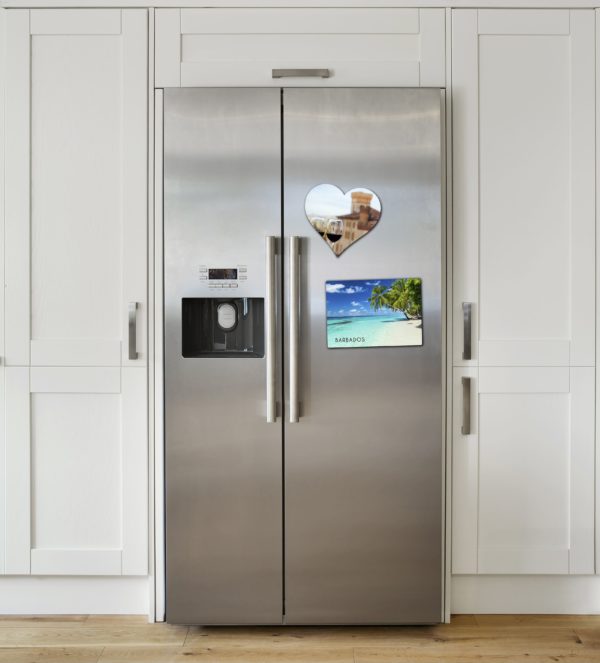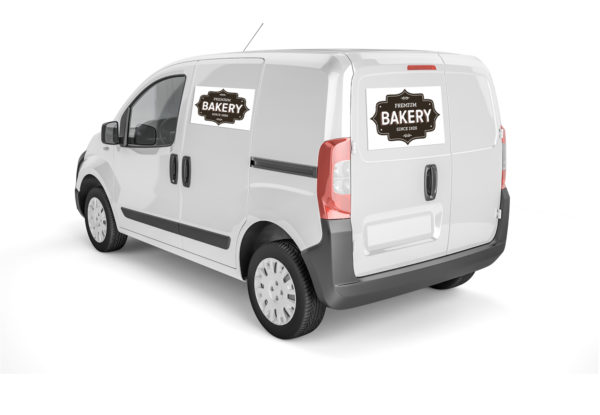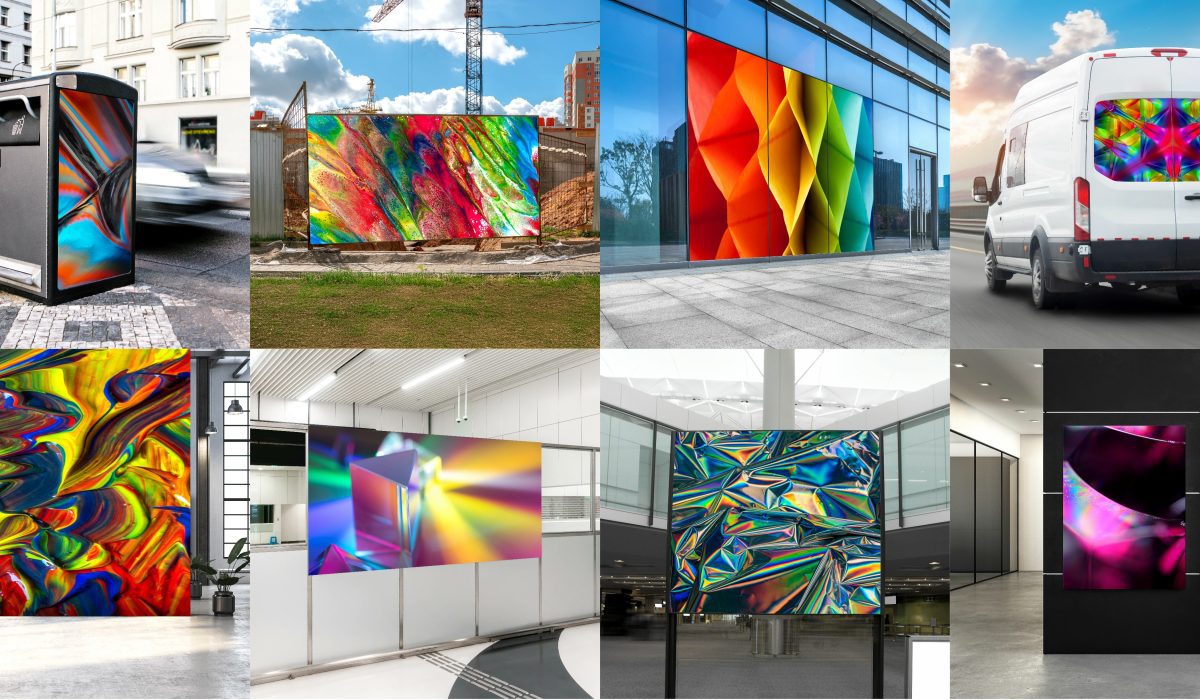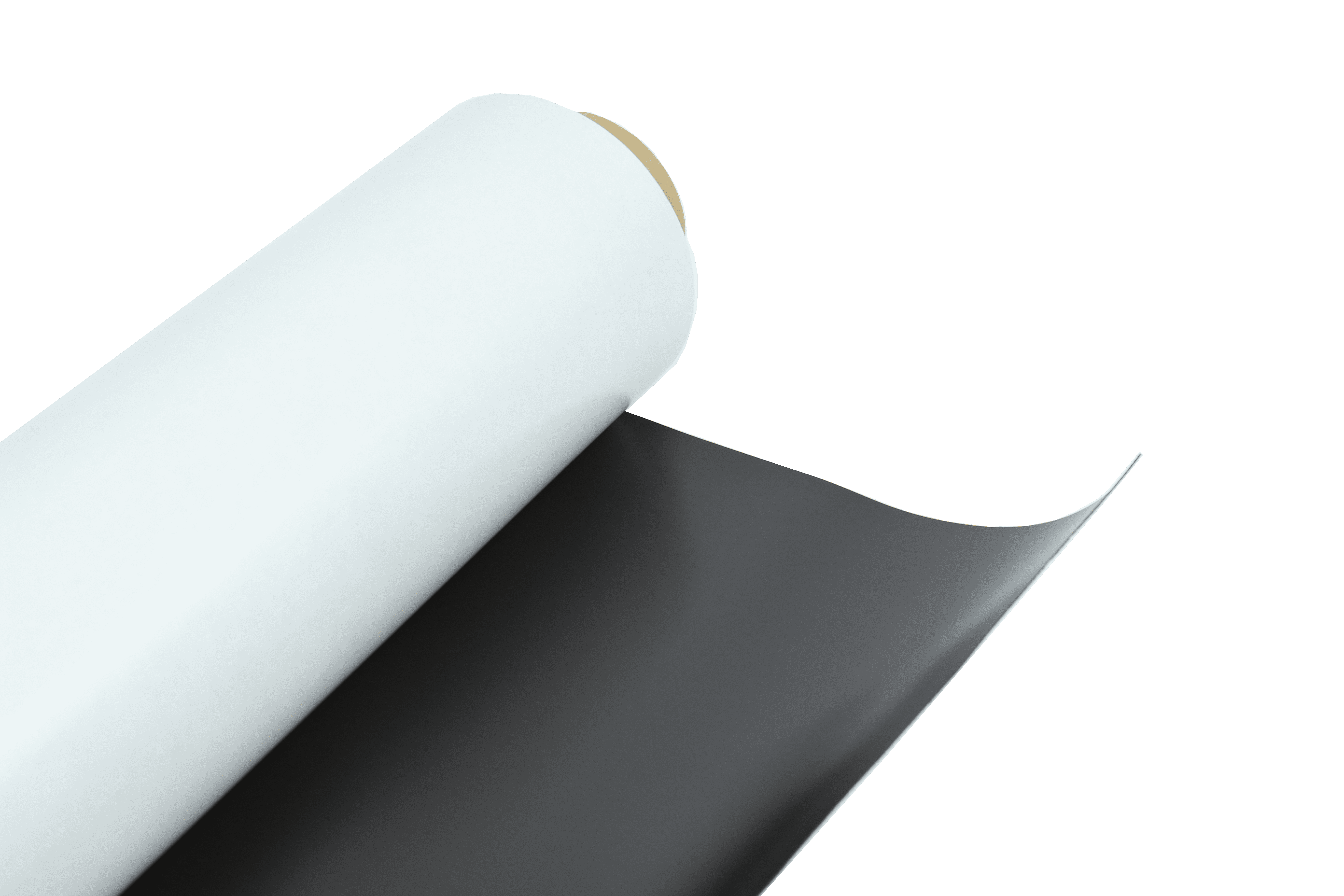Until we discovered magnetism, metals that attracted and repelled each other through a seemingly invisible force puzzled people for millennia.
Magnets even spawned a golden era of magic and could get you in trouble for witching in the middle ages. Now, there are magnets in electronics and on fridges, but while the magic has worn off, the usefulness remains.
What makes a material magnetic? The motion of electric charges. Everything is made of atoms, atoms have electrons, and electrons carry electrical charges, and it is the nature of those charges that makes something magnetic.
With printable magnetic and ferrous materials, these are made with specific quantities of ferrous materials to create the desired attraction.
Ferrous materials are magnetic because they contain enough iron to produce a magnetic field. Printable magnetic materials include sheets of magnetic material, which have found a wide range of use cases worldwide.
What are magnetic sheets used for?

Magnetic sheets are used to make magnetic displays and signs, fixings for cupboards, drawers and doors, boards, and of course, fridge magnets.
Magnetic sheeting can have a self-adhesive backing to stick to wood, plastic, and other non-magnetic surfaces. Non-sticky magnetic vinyl is less common, requiring a spray adhesive on installation.
Magnetic sheets can be cut to size without affecting the magnetic qualities, although the level of magnetism is reduced with smaller sheets.
What are magnetic sheets made from?
Magnetic sheets are permanently magnetised and are made with a rubber-based material, vinyl, or PET. The magnetism strength is tuned by adjusting the quantity of ferrous magnet powder or by increasing the size of the sheet.
Most magnetic sheets are flexible, so they can easily be rolled up and transported. You can also get solid magnetic sheets for paintable signs.
Are printable magnetic materials isotropic or anisotropic?
Isotropic means a magnetic material is not orientated, so it can be magnetised in any direction after manufacturing. An anisotropic magnet is orientated during manufacturing, so the magnetic qualities point in one direction.
This means anisotropic magnets are usually stronger due to refinement, while isotropic magnets are weaker.
Printable magnetic materials, specifically magnetic sheets and tapes, are isotropic, so we can manipulate the magnetic field in any direction.
What are the applications for printable magnetic and ferrous materials?
Magnetic materials like sheets and magnetic tapes are most widely used to print displays, signs and art that will live on a steel surface.
Here are some of the most common applications:
- Flexible labelling
- Metal fasteners
- Name badges
- Signs and displays
- Vehicle graphics
- Hanging storage for tools
How can magnetic sheets be printed?
To print magnetic sheets, you only need a compatible wide format printer. We sell a wide range of magnetic sheets compatible with solvent, UV and latex inks. The trick is to make sure the sheet thickness is not above your printer’s maximum material thickness specs, and your printer has a non-magnetic transport path.
Most digital printers can handle up to 0.5mm thick material. For thicker magnetic materials, they would need to be printed on a flatbed printer. Alternatively, vinyl can be printed and then applied onto the magnetic sheet afterwards.
Your printer will most likely have a profile setting for magnetic sheets.
Printing tips for magnetic and ferrous materials
- Some digital printers have metal plates, which can cause feed problems. If this happens, try covering the platen with thin cardboard.
- Magnetic media is semi-rigid, so the print head height needs adjusting to prevent head strikes (when the print head comes into contact with the media).
- After adjusting the print head height, you also need to make bi-directional adjustments to ensure the print comes out as expected.
- The feed calibration needs adjusting for the media thickness.
- Magnetic sheets can be printed with solvent, UV and latex inks.
- Magnetic vinyl works best with solvent, eco-solvent and UV inks, while paper topcoat products work better with aqueous-based inks.
- You may need to slow down the print session compared to paper printing because vinyl prints take longer to dry.
- Magnetic rolls are very heavy, so it is good practice to cut the rolls down to size before you start feeding the printer.
- A printer’s feeding system can overheat when printing magnetic media. If this happens, try pausing the printer for a minute. An external fan will also help.
- A common limitation of Inkjet printers is maximum media weight. Make sure you abide by the weight limits set by the printer manufacturer.
- If your printer struggles to print the desired magnetic material, try a thinner product to see if this resolves the issue.
What is pull force?
Pull force tells you how strong a magnet is. It is the force required to pull a magnet free from another object, and it also tells you a magnet’s holding power. A magnet with a pull force over 3.175 kg can pinch your fingers.
All magnets have a pull force. The pull force is low with magnetic sheets, typically around 22 grams per square centimetre. However, it is sufficient to stick to most magnetic surfaces because the material has a large contact area.
Pull force is also affected by material orientation. For example, a square fridge magnet will stick to a fridge when flat but not when it is stuck on its edge.
Strength and flexibility with printable magnetic materials
Because a magnetic sheet’s magnetic strength is determined by the quantity of ferrous magnetic powder in it, a higher-strength sheet is less flexible because the sheet is denser, a trade-off that needs balancing between applications.
A weak magnetic sheet equals more flexibility; these can be rolled up tight and are extremely pliable. A strong magnetic sheet equals less flexibility; these are more rigid, heavier and more difficult to print.
Car magnets and vehicle grade magnetic sheets

Vehicle grade magnets are used for signs and graphics. The sheets are usually 0.85mm thick with a pull force of around 0.088lbs per square centimetre, which is sufficient for the forces exerted on the magnet when the vehicle is in motion.
Magnetic vinyl is used on vans and cars for temporary advertising because the magnetic graphics can be removed quickly with no damage to the paint.
Product examples include Kinetix Standard Car and Kinetix Premium Car. These products have a special top-coating that reduces dirt build-up and an adhesive that leaves no residue.
What is a ferrous material?
Ferrous materials are magnetically receptive but are not magnetic. Instead, they provide a surface for magnets to stick to.
Ferrous materials contain one of the four ferromagnetic metals as the main alloying component: iron, nickel, cobalt or gadolinium.
Iron is magnetic, so most ferrous metals are magnetic. We say ‘most’ because there are some non-magnetic ferrous metals. For example, manganese is a ferrous metal, but it is non-magnetic because it contains large amounts of other metals (these metals balance out the magnetic qualities of the ferrous metals).
Non-ferrous materials are non-magnetic because they do not contain any appreciable amounts of iron or other ferromagnetic metals.
Magnets are made using ferrous magnet powder, which contains a combination of strontium carbonate and iron oxide. However, magnetic sheets are made with strontium ferrite magnetic powder within a vinyl/rubber binder.
With ferrous sheeting, the product is non-magnetic, but it is magnetically receptive, so you can use it to make displays for magnets.
Why do you need ferrous material?
You need a ferrous material to make a magnet because ferrous materials are the only materials with an appreciable magnetic field to act on and attract.
There are no non-ferrous materials that are physically attracted to magnetic fields. For example, gold and copper are non-magnetic, just as wood and plastic are non-magnetic, and it is impossible to make them magnetic.
When a magnet interacts with other ferrous materials, it attracts them. You can see this yourself by taking a neodymium magnet outside and running it through the dirt; the magnet will pick up pure iron from the ground.
Magnetic vs Ferrous
Just because an object contains ferromagnetic metals, this does not mean the object will have a sufficient magnetic field to act on and attract.
For example, a ferrous sheet is not magnetic, but it provides a surface for magnets to stick to because it is magnetically receptive.
Magnetically receptive materials let magnets stick to them, but they do not attract them the same way magnets do.
To be magnetic in the sense that it physically attracts and acts, the object has to have an appreciable magnetic field.
The magnetic field can only be created with sufficient ferrous materials. Iron is the most common, including nickel, cobalt and gadolinium.
Each of these ferrous metals has an attraction point (meaning the field of the object has to be a certain strength to act on and attract other ferrous materials). Iron-based magnets are the strongest, followed by nickel and cobalt.
How to create a dry-wipe board with magnet
A fun little experiment with self-adhesive magnetic sheeting is to create a dry-wipe board with a magnetic eraser.
What you need:
- Self-adhesive white vinyl magnetic roll; or dry-wipe laminate and adhesive
- MDF board or acrylic plastic sheet (for the vinyl to stick to)
- Drill and screws
- Flat, lightweight object big enough to hold to make the eraser; a small sponge is ideal, providing you use a strong adhesive.
Step 1
Measure your board and cut your magnetic sheet to size.
Step 2
Fix your MDF board or acrylic sheet to the wall. We do this first so that the magnetic sheet covers up the fixing points.
Step 3
Stick the magnetic or ferrous sheet to the board. If you have self-adhesive vinyl, just remove the backing paper and use spray adhesive if you have non-sticky vinyl.
Step 4
Take your flat object and stick your cut-out magnetic strip to the underside. The magnetic side should now stick to your whiteboard.
Of course, you might just prefer to buy a magnetic whiteboard in the first place. These are made from aluminium with ferrous sheeting.
Summing up

If you want to print magnetic materials like magnetic vinyl sheets and rolls, you need an Inkjet printer rated for heavy media.
The magnetism strength is determined by the quantity of ferrous magnet powder in the binder. However, a stronger magnet equals a less flexible product, so you need to weigh up your strength and flexibility requirements.
Some products, like Kinetix Magnetic Sheet, have clever engineering. It can be folded and twisted without damaging any of the magnetic properties.
The most common thicknesses for printable magnetic materials are 0.19mm, 0.3mm, 0.6mm and 0.85mm. Most wide format printers can print 0.19mm magnetic material, but you will probably need a specialist printer for heavier types.
In addition to vinyl, you can also get PET ferrous sheet made from PET (polythene terephthalate), a pliable plastic that is 100% recyclable and easy to print. A ferrous sheet is not magnetic but provides a surface for magnets to stick to.
We hope you enjoyed this article.Contact us if you have any questions or need help choosing the right magnetic materials for your project.
Latest blog posts
View all posts5th May 2025
Common Challenges with PVC Free Vinyl and How to Overcome Them
PVC free vinyl is becoming an increasingly popular choice for businesses looking to reduce their environmental impact [...]

15th April 2025
Innotech Expands Range of General Formulation Self-Adhesive Vinyls
After becoming the exclusive UK distributor for General Formulations last year, Innotech are now offering the new GF [...]

11th April 2025
Gary from Print.com is Pets in Print Trophy winner
Innotech Digital and Display announce the winner of this year’s Pets in Print competition is Gary from Print.com. He [...]




